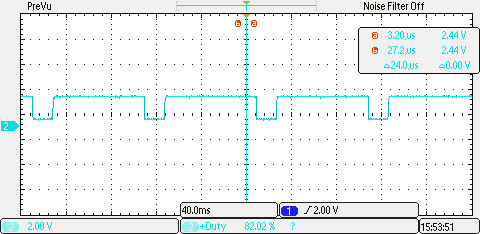TIDUF44 January 2024
4.4.4 Cell Balancing
The design board supports external cell balancing with triode. The peak balancing current is 64 mA with 4-V cell voltage, approximately 50 mA flows through external balancing resistor about 14 mA flows through the BQ7690x device. Battery balancing can only be triggered by command. Figure 4-10 shows the external cell balancing performance. Cell balancing duty is about 82%.
 Figure 4-10 External Cell
Balancing
Figure 4-10 External Cell
Balancing